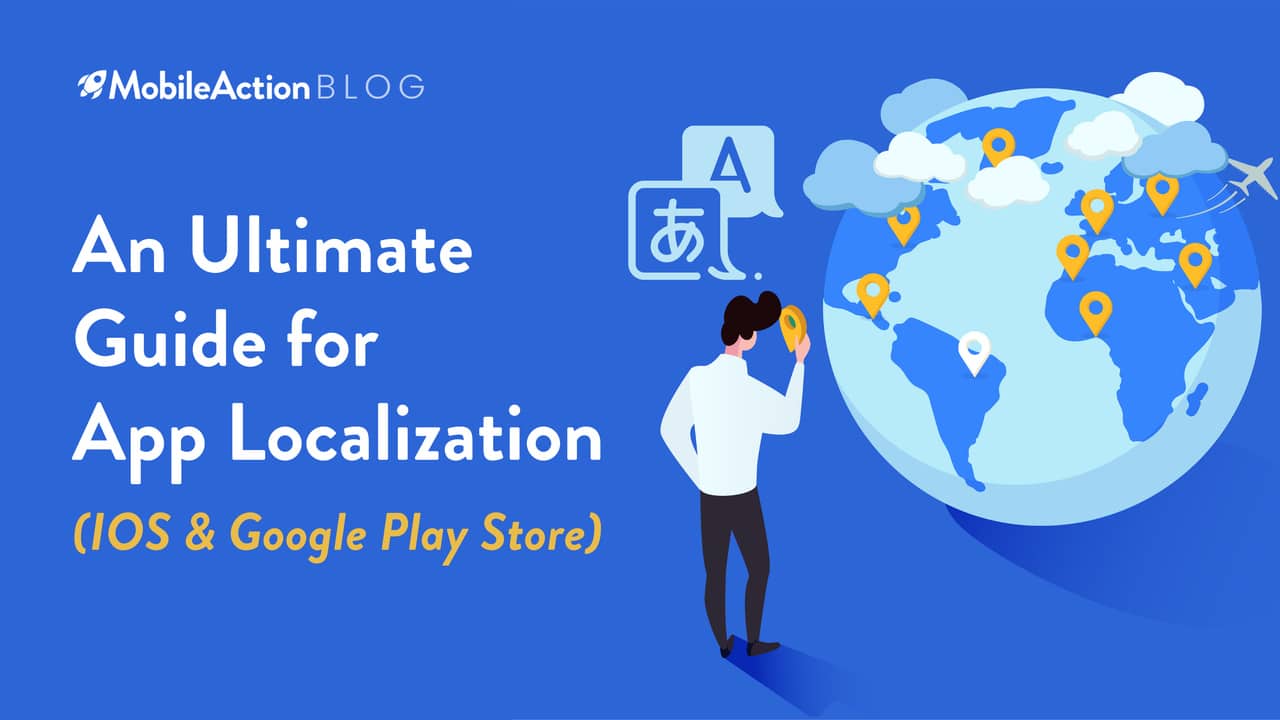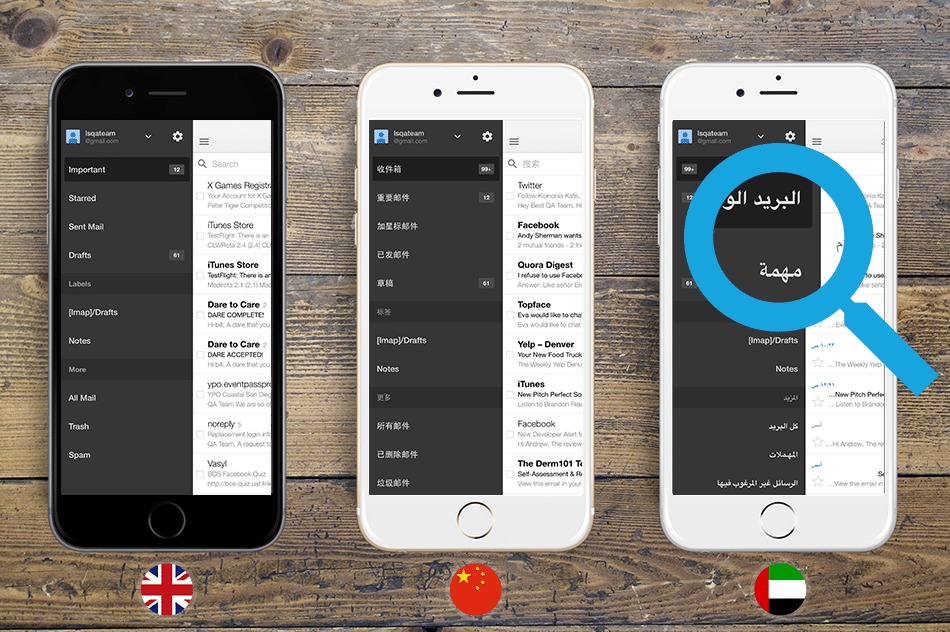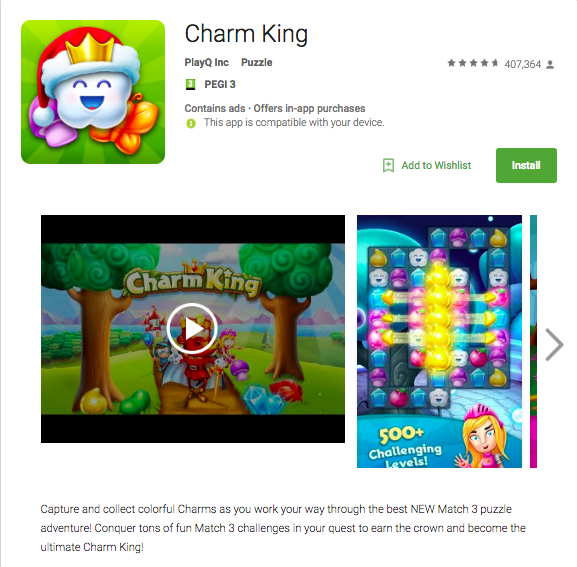In today’s global app stores, positioning your app based on the local characteristics is becoming a necessity. In other words, a successful ASO strategy requires focusing on app localization.
Your app may be a perfect fit to attract a global audience. Still, you should consider the searching behaviors of each target audience based on their languages.
Mobile App Localization can seem as scary for app marketers due to its complexity. It is true that coming up with the perfect localization strategy can require some effort and time. However, successfully localizing your app will reward you with a boost in-app download numbers and category rankings.
In this blog, we will focus on all of the essentials of app localization and why is it important for your overall ASO and app marketing strategy.
With our introduction to app localization and following tips and tricks, we hope that you can enhance your localization efforts.
What is App Localization?
In its simplest form, App Localization is the process of adjusting your app to fit in a certain language, culture and some other factors of a specific country the app will be available.
In terms of App Store Optimization (ASO), App Localization is achieved by optimizing the critical category ranking factors of an app, such as the keywords and the visuals used in the app profile.
Why is App Localization Important?
Mobile App Localization is a great way to increase your app downloads in other storefronts that you have launched your app. There are several reasons why localization is extremely important.
First of all, Google and Apple tend to favor apps that are localized when ranking them to provide their users with a better user experience.
App Localization will give you a huge advantage while ranking in non-English speaking countries.
In these regions, people would likely to prefer apps that they understand. Even though they know English, it is safe to assume that they would still choose to prefer using an app in their native language.
Moreover, app localization will also help you with English speaking countries. To give an example, it is possible to observe huge differences in the UK, US, and Australia in terms of the keywords people use while searching for an app.
Keep in mind that app localization is not all about translating your app’s metadata. You should consider it as a complete makeover for your app including modifying creatives parallel to the culture of the target market.
This process also includes adjusting the creatives such as the images and videos in the app profile as well as changing the measurement units based on the currency.
Overall, app localization is the key to boost your conversion rates and overall user engagement, also helping you to grow your business on a global level.
How to Conduct App Localization?
In order to take localization under consideration as a necessity, an app has to go through a process called internationalization.
In its simplest form, internationalization would mean that your value proposition and app are not locked into a single language to be functional. It would mean that you have an app that can adapt to different languages.
Adjusting your app based on a certain language is called localization. In the long-run, we advise app developers to focus on internationalization as a first step so that localization can be a less painful process later on.
In short, Internationalization is the process of making your app eligible for localization. It’s the process of coding your app in such a way that you can easily switch the language of it without too much hustle.
The process of conducting app localization can be considered as translating every text on your app to a certain language. As mentioned earlier, it is actually a translation and beyond.
To perfect your app localization, you should know many important variables such as the culture, trends, and language of your target country. Optimizing your creatives in parallel with the local cultural trends is also a huge bonus to your app localization strategy.
You should look for words and phrases used by the people to express a certain meaning as accurately as possible. To ease this process, hiring a native speaker and a proofreader will maximize the impact of your app localization efforts. Now, let’s move into the details a bit further.
Keyword Localization
Beyond knowing the exact counterparts of words in a foreign language, choosing the right keywords plays a key role in increasing your app download and conversion rates.
In this regard, MobileAction’s Keyword Tools offers you unique opportunities. While you’re localizing your app, MobileAction provides you with a chance to make crystal clear decisions.
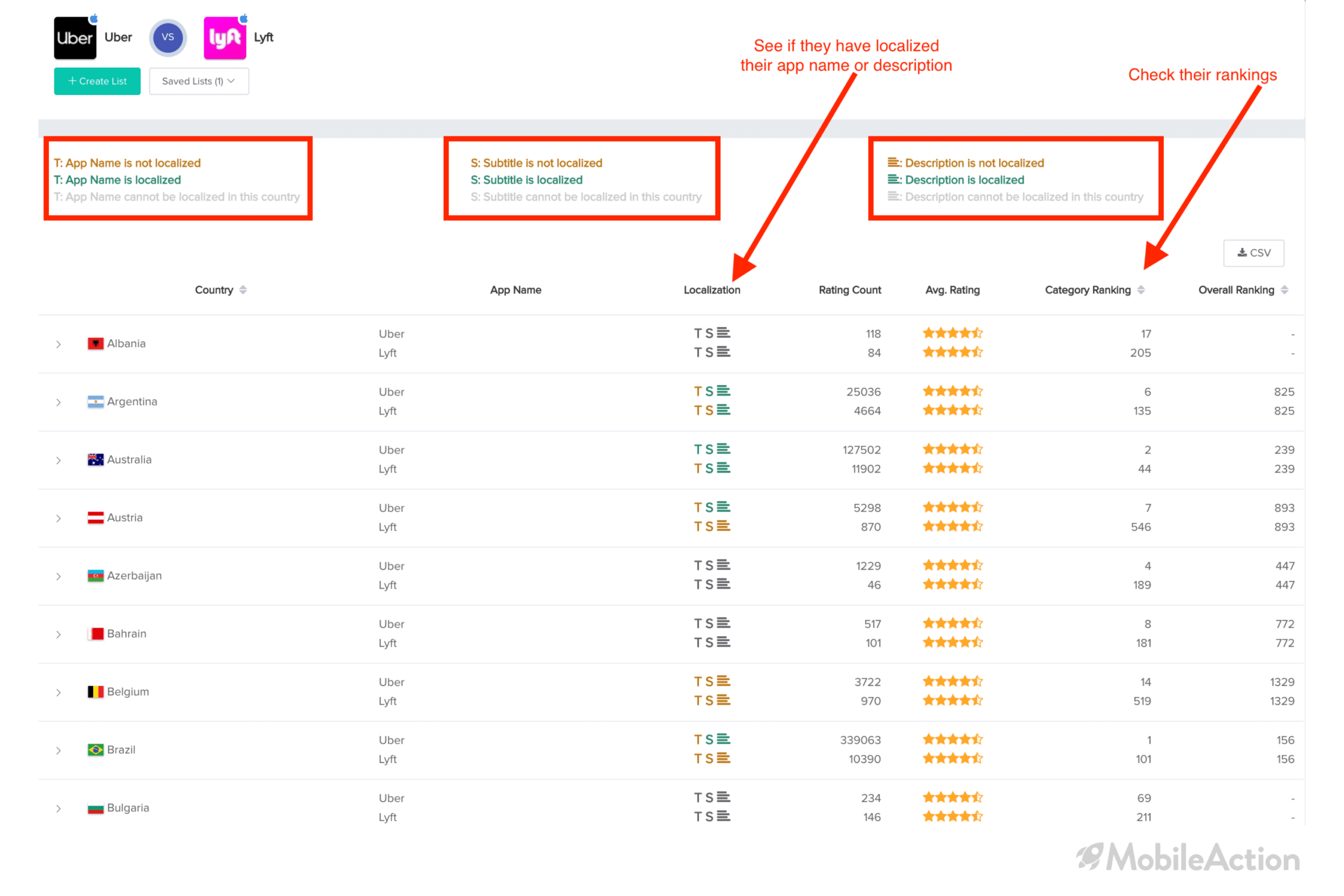
You are just one click away from achieving your app localization goals with MobileAction by using our Localization tool, you can see if your competitors have localized their apps and if they have in what way they have done so.
Acquiring First Users After App Localization
With our Keyword Suggestion feature, look at your app’s direct competitor and try to steal some traffic. Also look carefully: What are their top keywords? Which keywords bring them the most traffic? You can use Keyword Intelligence feature to see which words you should be using on your keyword spot.
MobileAction dashboard has a different keyword pool for every country. Take advantage of this and try different keywords from this pool. Also, look at your app reviews, they are also categorized by country.
Localized App Icon Design
Your app icon design should be global and local at the same time. That’s what marketers call “glocal” in the last decades. It should be fresh, inspiring, but at the same time, all segments of your audience should find something that belongs to them in your icon.
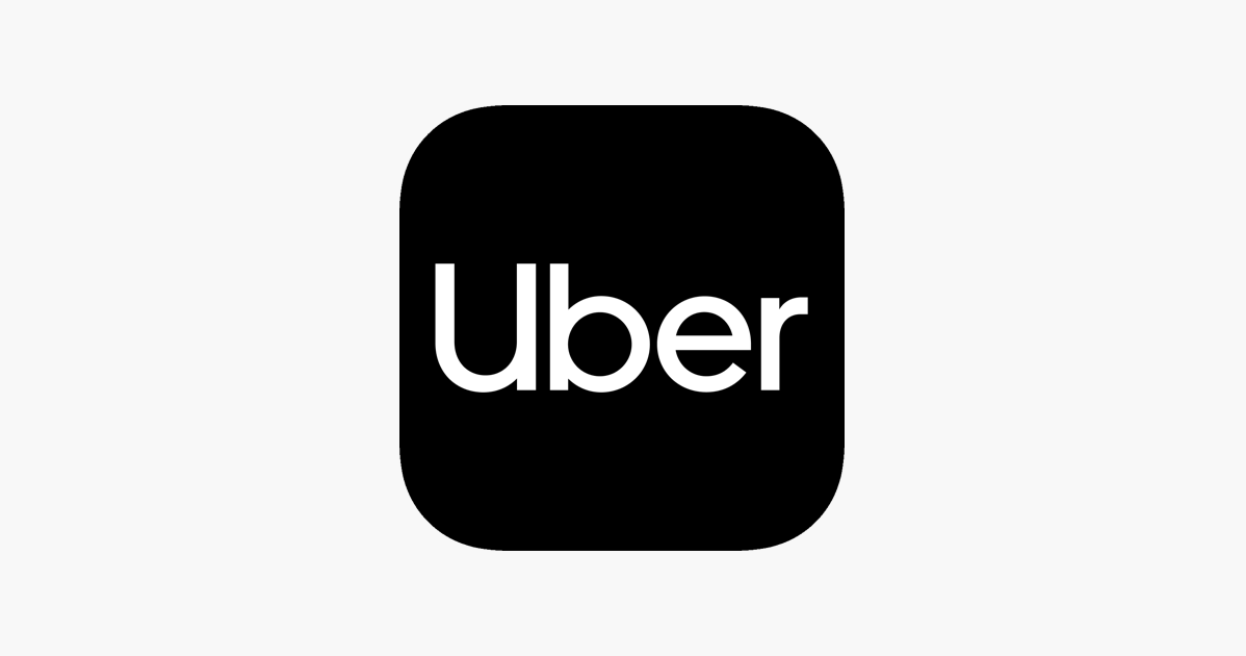
The design of your icon impacts your target audience significantly. Therefore, you should have an icon that resonates with every customer from all around the world. If you need some inspiration to create your own brand icon you should take a look at Creational and other resources to help you during the process.
Creating Traffic In Another Country’s Store
App Localization doesn’t solely include your app’s keywords. Entering a foreign locale may require more than that in order to get more downloads.
Localization starts with translating the language of the app and further includes modifying all the other elements (keywords, app description, app icons, images, preview video, keyword optimization, and even the name of the app) based on your target audience.
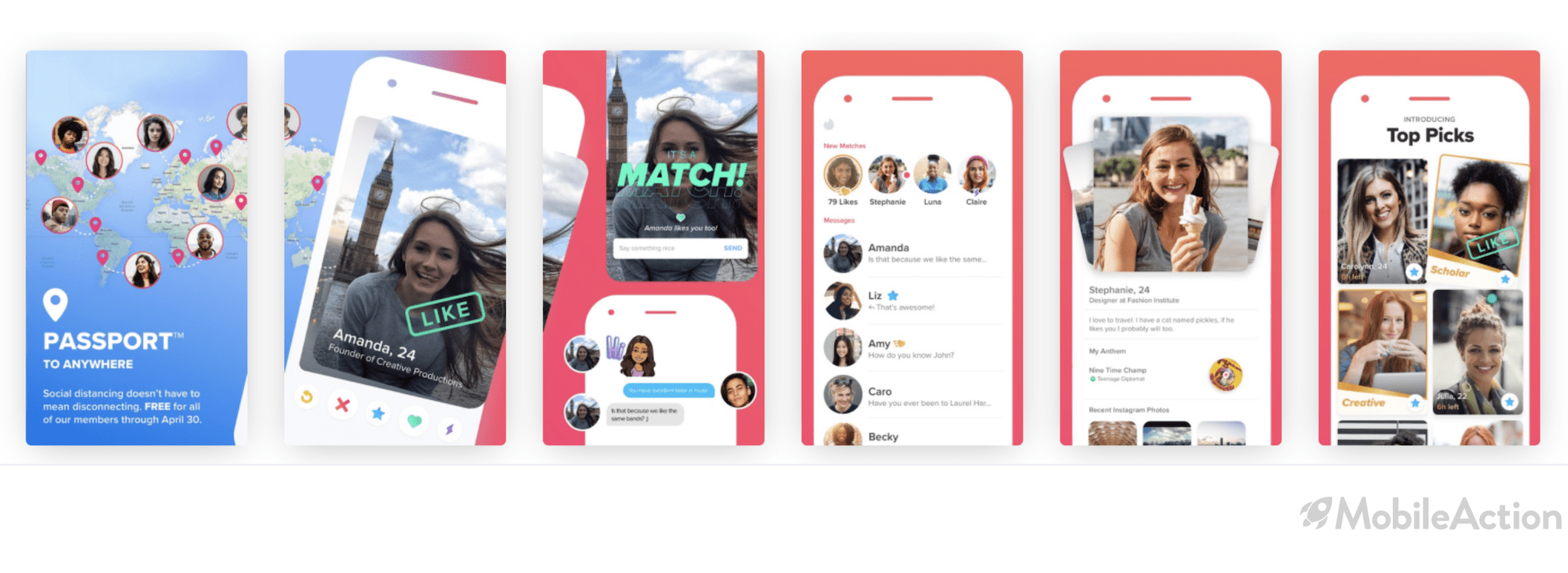
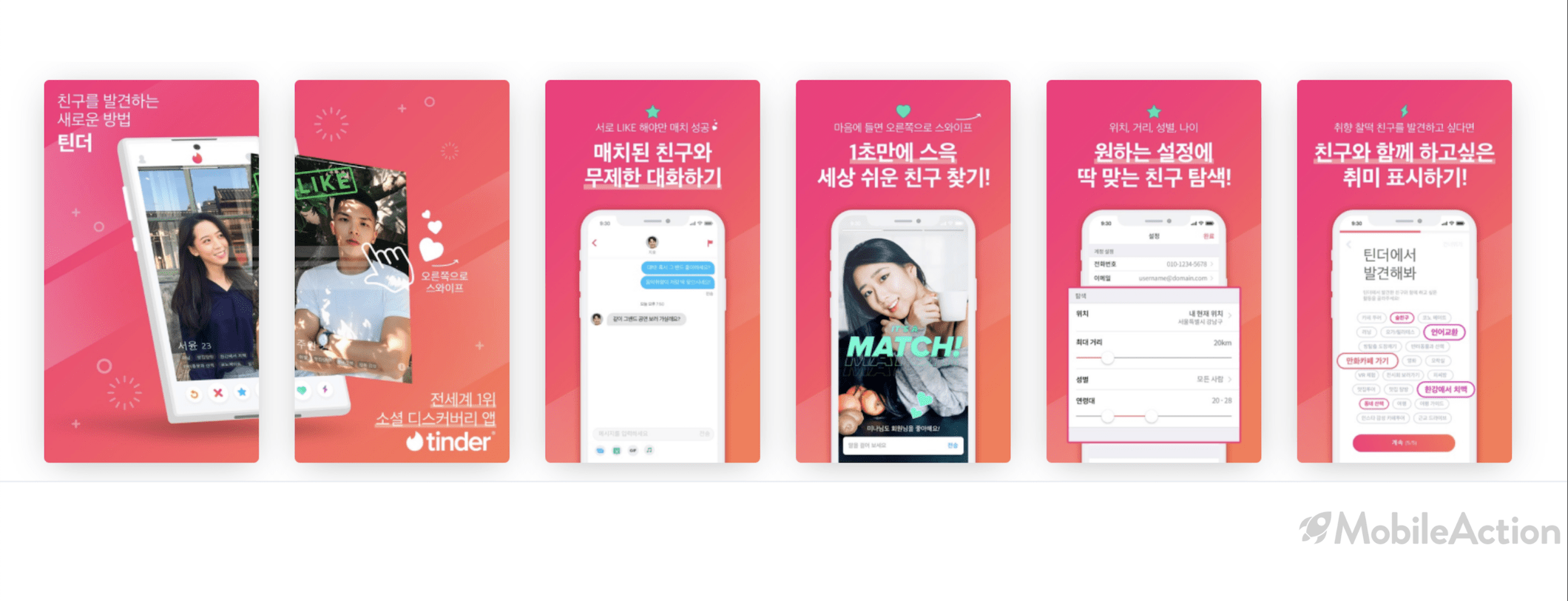
Many successful app developers owe their success to app localization. To give an example, Tinder is the perfect example of a successful localization.
Tinder localized its screenshots to optimize it’s ASO for different markets. You should consider adjusting your screenshots, as well.
You can also use MobileAction’s Review Analysis from different regions and see potential localized keyword. It gives you the advantage of getting more downloads from repeated words. Tracking your review keywords may give an idea of how should you choose the right keywords and what you are targeting.
Translation Samples
There are many ways to make the app localization process easier. Apple supplies a list of vendors you can request. You can check;
App Localization: Apple App Store vs Google Play Store
Now that you have a general sense about the essentials of app localization, we can focus on the details and specific suggestions for each app store. Both Apple App Store and Google Play Store have unique points that you should pay attention to.

IOS App Localization
The Apple App Store supports up to 155 countries and the number of localizations can be viewed as 40 different languages.
Knowing which languages you can rank for in each localization is quite important as you will potentially double or even triple the number of keywords you can rank for.

When doing Localization, it’s quite important that you should localize every bit of your product page.
Nothing’s worse than a half localized app page. That’s why every bit of content that has a text on it should be translated properly and you should also go over every imagery to make sure they are interesting enough for the locals.
Localization is particularly important for the Apple App Store as it gives you the chance to rank for different localization in a single country.
Let’s say you have localized your app for French (FR), you will be indexed for French keywords while also retaining your chance to rank for English (US) keywords as well. This alone is a great opportunity for you and a primary reason to localize your app in the App Store.
To learn more about: Apple iOS App Store Optimization
Google Play App Localization
The available localizations are a bit more numerous in Google Play as you can choose which language to localize from 77 different localizations.
There’s quite a number of localizations to choose from in the Google Play Store. Localizing for all of those 77 localizations might be a difficult task. So, identifying the best possible markets for your business is crucial in this case.
Another important point about localization for the Google Play Store that might be harmful to your conversion rates is the danger caused by unchecked auto-translations. Even if you don’t localize your listing page, Google provides its users the option to translate your product page to their language. If your page is localized this poses no threat to you.
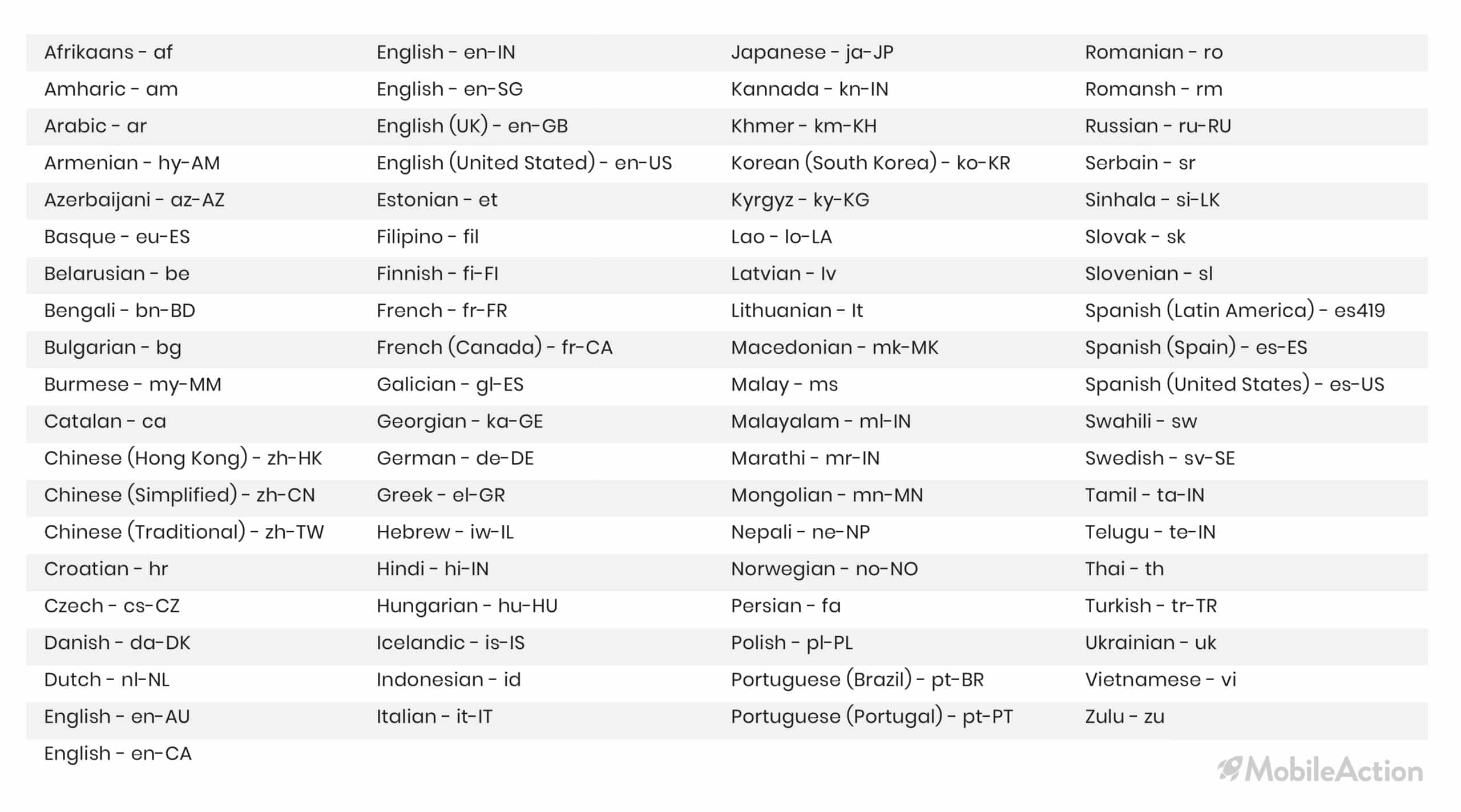
However, if you haven’t localized your product page this has the potential to be a huge issue for your app. Google is constantly improving on their algorithm. However, autotranslations are still not the most reliable thing.
Therefore, even if you are not going to localize your app checking if the autotranslations are working properly can only help.
Furthermore, the short description of your app is translated in any case. So, having a look at that is quite important too.
Recommended Reading:
Why is App Localization a Must for ASO?
In today’s highly competitive app stores, ASO is a necessity to maximize your app’s success. For a strong ASO-strategy, localization is a must, especially if you are aiming for a global presence in app stores.
The App Store provides services in 40 languages in more than 150 countries. Research suggests that almost one week later after taking steps toward app localization in an iPhone App, the subsequent download rates in that same country increases by 130% on average and revenue rates also increase by 25%.
Moreover, it is possible to observe a growth of 300% or more, when companies target key countries outside of their primary country.
Considering the aforementioned findings, we can easily say that app localization can be a necessity even for your home country as it can help you to grow your user base very quickly.
It is important to note that many companies don’t ponder about app localization and even though they succeeded big time in their home turf, they can’t reach the same level of achievement in other countries’ markets because of this reason.
App Localization: The Essential Checklist
Now that you are aware of the importance of app localization and know how to implement it to your app, we can talk about the checklist for app localization. Apparently, there are 4 major app localization questions that you need to answer.
1. Native Market Success
Before you start investing in app localization, you should do a complete “check-up” of your app. Are its ratings and reviews mostly positive? Is its revenue stream where you want it to be? Are its downloads and category/overall rankings fairly steady? Check your app for weak points before you start localizing.
2. Timing
Based on your native market success, timing plays an important role in a successful app localization. Before deciding to take your ASO-strategy to a global level via localization, you should monitor your app’s performance on a micro-level.
If you believe that your conversion rates are satisfactory and your app is internationalized, you can start mastering your localization with necessary modifications to satisfy a global demand.
3. International Interest
As mentioned in the previous item, demand is the key determinant of your app localization decisions. Even if you haven’t localized your app in other markets, you may still be getting international interest. Check your international page-view-to-download conversion rate. Based on your findings, you can decide which markets are worthy of app localization and arrange your efforts accordingly.
4. Your Competitors
Taking a look at your competitor’s international strategy may give you some insight into what you should expect from your own. Where did your competitors choose to localize (if they have), and are they experiencing success in that market? On the flip side, you may want to choose a different market from them, so there’s less competition in your category.
Once you’ve considered these questions, you should have a pretty clear answer if your app is ready to begin the localization process or not. Make sure your app is “mature”, you’ve considered your timing, and you’ve planned out your market strategy before you start localizing.
Recommended Reading:
How to Find the Best App Localization Strategies
Doing a full localization on an app can be an expensive and time-consuming process. So you need to have as much information as possible before you make a decision to move forward.
Now, we will show you exactly how to get this information.

What are the Localization Best Practices for Specific Countries?
One of the really cool things about our Localization module is that you can also see exactly what an app publisher has localized in each country. You can also save time by comparing two apps at the same time.

Here’s an example when we compared Clash of Clans and Clash of Lords 2: New Age, in Chile and China.
In both examples, Clash of Clans has been localized for the native language, while Clash of Lords has not. Also notice that the app screenshot order is different in each country, for CoC.
This would suggest that they have done screenshot mobile A/B testing and each country had different preferences.
Of course, Supercell has a gazillion dollars, compared to other game companies. So they can afford to localize for all countries and do a lot of split testing.
But in niches that aren’t as flush with money, app publishers are forced to be more selective.
…and that is when you will see some patterns that will help you uncover a solid localization strategy.
What are the Best Countries to Localize For?
Using our Localization module inside our Premium ASO Intelligence package is an easy way to get an overview of the localization strategy of any app. When you select an app to analyze, you will see the following information about every country.
In order to get the top countries quickly, simply sort by the number of ratings, by clicking on the Rating Count header. Now you know which countries have the most users.
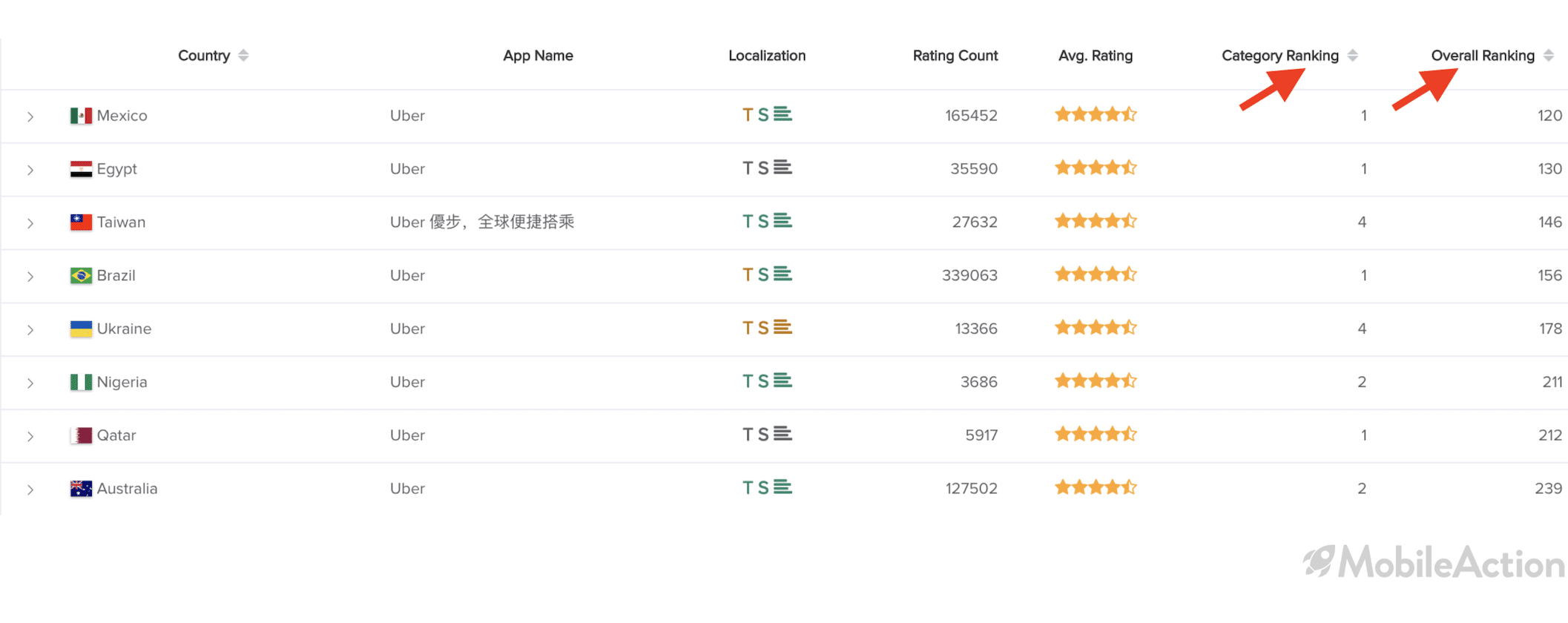
As you examine the country list for every app in your niche, you can easily see which countries the app has been localized for. If enough top apps are localizing for the same countries, then you will have a good idea of which countries may be good targets for localization.
You can double-check if their localization is working by using Market Intelligence to get the estimated number of downloads in each country.

3 Additional Tips For Mobile App Localization
With this blog post, we went through all the important aspects of app localization. We will finalize with 3 Additional Tips for maximizing your localizing efforts.
1. Localizing Your Creatives
Before localizing your creatives such as your app screenshots and preview videos, a detailed audience research will prove to be quite useful. Localizing the visuals to fit the taste of the local people will require you to have a deep understanding of the culture of that country.
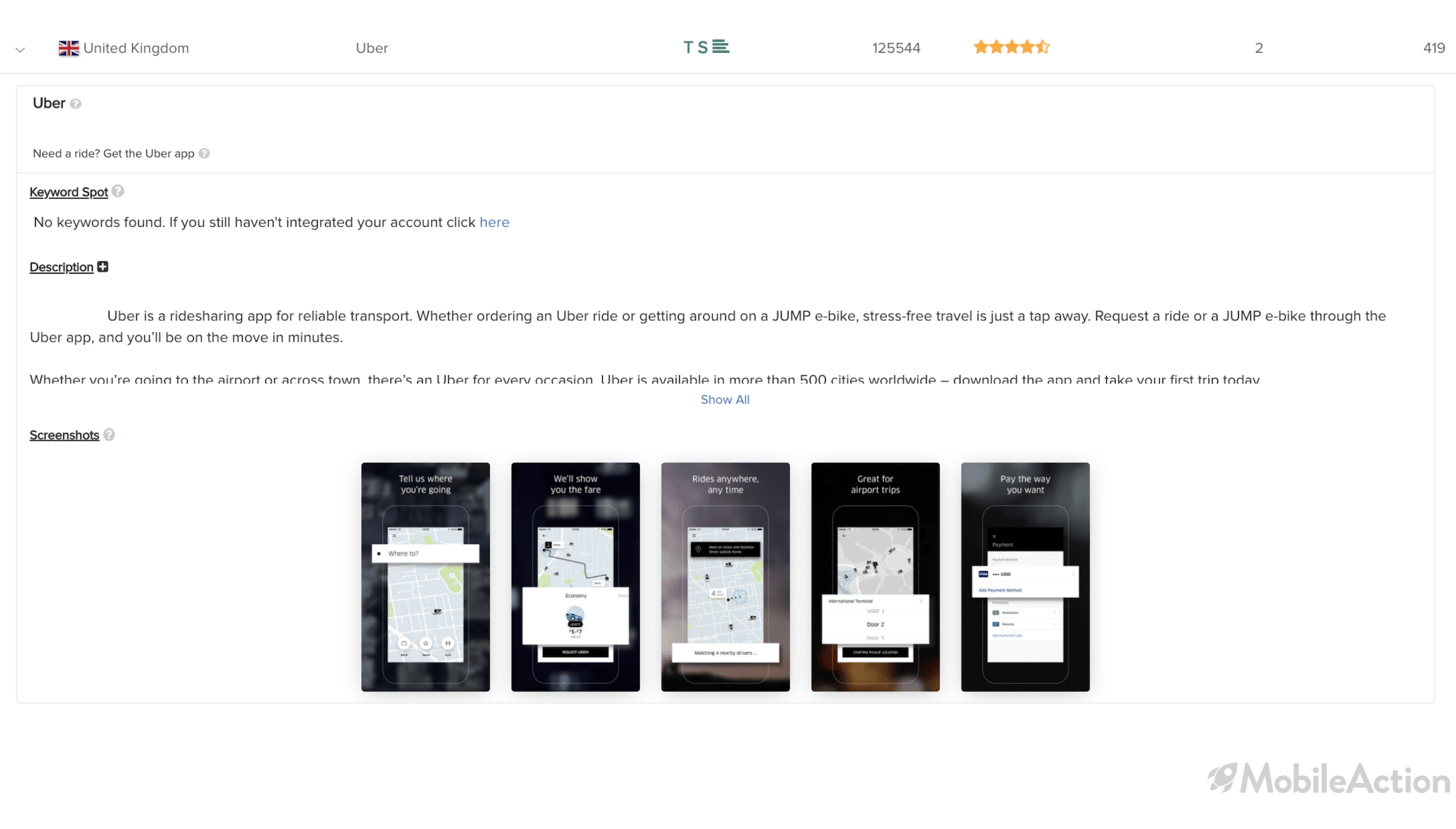

As mentioned in earlier sections, you will probably need the assistance of a native speaker who is also well aware of the culture, market trends etc. of the target country. Having your creatives localized alongside your metadata will make your app the best possible choice for the local people.
2. Seasonality
One other way to get value out of Localization is to adapt to the seasonal events in your target countries as well. There are so many ways you can use seasonality to boost your traffic, retention rates and conversion rates.
The most obvious examples that come to mind when talking about seasonality is holidays such as Halloween or Christmas. Remember that there are various different cultures and holidays across the globe. Furthermore, seasonality isn’t only about the holidays. When talking about seasonality, we also refer to various events such as carnivals, sports tournaments or even festivals.
If your app has a way to benefit from such occasions, following the events in your localized countries can open up great business opportunities for you.
3. Using MobileAction to Improve Your App Localization
One other way to improve your mobile app localization efforts is to get help from the Localization tool of MobileAction to speed up the process of localizing your app and have a general understanding on the strategy your competitors are following.

You can also compare two apps and have a look at how have they done localization and which one has worked better by seeking their localized descriptions, app names, screenshots and comparing their category rankings, average ratings, and rating counts.
Worldwide Localization
Even though we live in a global world, localization is still an essential fact. When we think about it on a sociological aspect it would be no surprise that people are still wanting to live with their own cultures and languages and even showing support and enthusiasm towards efforts like localization because of this. United Nations also especially supports the protection of local and mother languages and celebrates this every year on February 21st, since 1999. Its full purpose is to promote an awareness of language and cultural diversity.
App firms paying extra attention to localization is a move that’d stand out. Having an app that is enhanced and localized accordingly would show that the app exists on a global basis which would add to users wanting to download. Localization has an etiquette to and doing it right is crucial for success. To achieve this success an ASO tool is a great and convenient way to go about it.
Investing in an ASO tool for localization should be a priority for apps that want to reach a global audience and grow in the world rather than just their hometown. Wouldn’t you also want to discover if one of your favorite apps or better a competitor is also localized or not? If you’re an app developer, having it localized and usable across languages and the global must be one of your top priorities.
Interested in seeing more about ASO strategies? Schedule a demo to let us show you more insights about the app industry.
